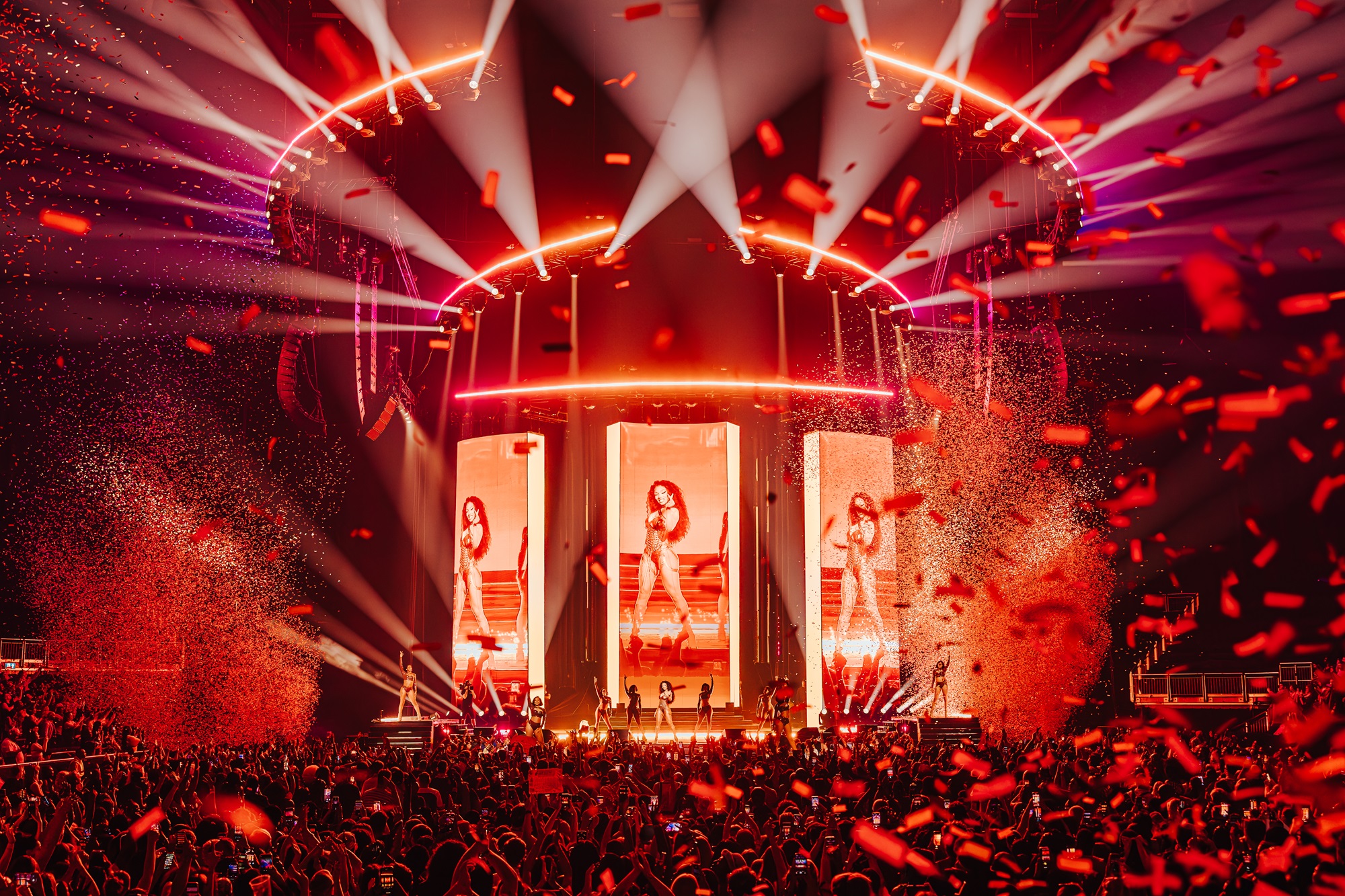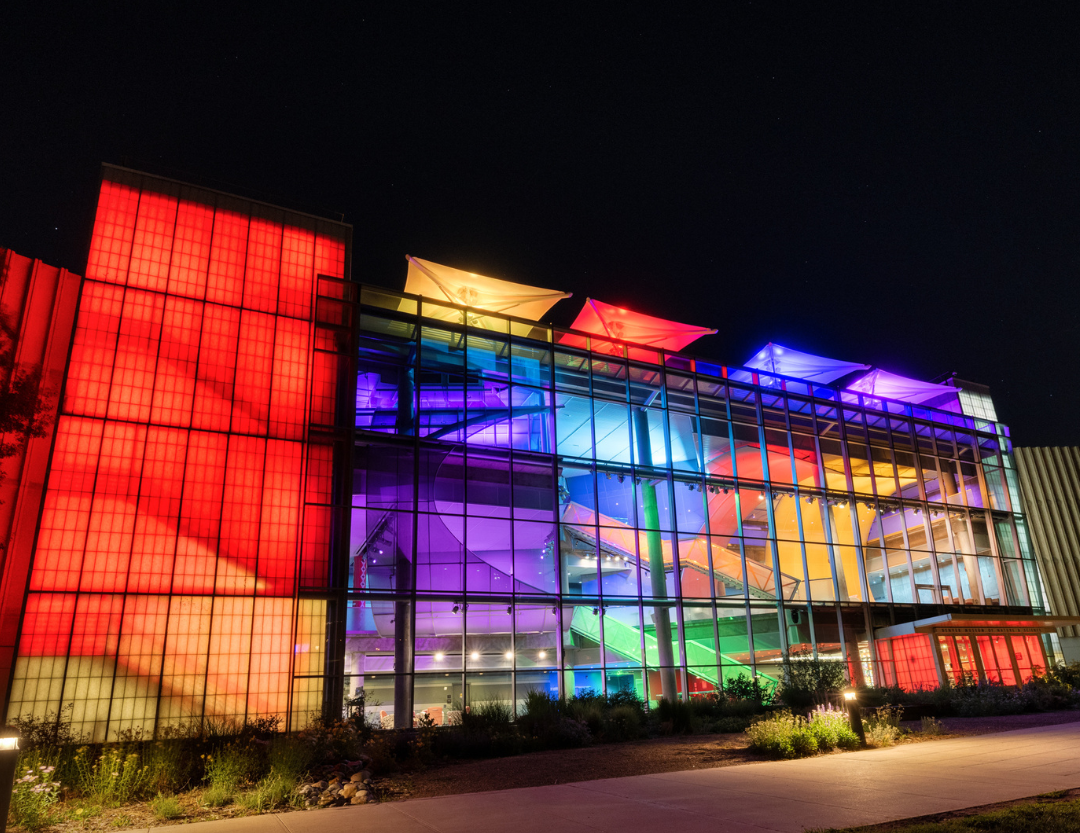AUSTIN, TX — It’s become an annual challenge for Pyrotek Special Effects’ Doug Adams: how to top the “Wow” factor generated by the previous year’s pyro design for the Trans Siberian Orchestra tour. “Talks of new designs and proposals start literally after the completion of each year’s tour,” said Adams, who worked with TSO founder Paul O’Neill, LD Bryan Hartley and lighting programmer Nick Militello on the 2008/2009 tour.
This year, Adams had a new weapon in the arsenal — the company’s Fire Screen gas effect. The screen is a modular programmable pixel-based unit than can be used to control various propane flame effects from high to moderate speeds. The fire-screen systems give users the capability of shooting a lazy flame bar or fire jets which, when in an all-on cue, can create a wall of fire up to eight feet high. The units can also be used for fireballs and flame columns, and can also be custom-built and programmed to integrate various chase sequences and flame effects into all types of scenarios.
TSO used 18 modules to create 72 feet of fire screen. These units not only had the ability to be programmed to synchronize with the other visual effects on the set, they were also positioned in close proximity to the performers and the audience — but, of course, not too close. “First and foremost, safety is number one,” Adams said, voicing the company’s credo. “There is no room for error. You can never become complacent,” he added. “When in doubt, leave it out.”
The challenge of balancing safety and visual impact has become more complex, however. “This year’s biggest challenge was definitely the incorporation of the Fire Screen,” Adams said. “We were trying to work out some of the bugs that presented a bit of a learning curve throughout the 10 days of rehearsals.”
Along with proximity of the effects to the performers and the crowd, Pyrotek needed to figure out how to fly the fiery effects. “The Fire Screen at specific points is situated on the truss squares at a height of six feet. It would be raised and lowered up to a trim of 20 feet on the upstage,” Adams said. This presented some initial challenges with hosing, cabling and priming.
After those issues were resolved, the next challenge was to program the cues. “The original code that was used for programming was very time-consuming,” Adams noted. A Road Hog console served as an interface between protocols and allowed Militello and Adams to operate the Fire Screen as if it were a lighting fixture, with chases, sequences and matrixes — or simply provide a stage-spanning blast, used for performances like “Prelude to Madness,” “Carmina Burana” and for the show’s final bows.
Along with the Fire Screens, the finale this year included more airburst, comets and mines. Adams also designed an S-style gerb-chase that had 96 gerbs measuring 30 feet high detonating in a three-second sequence for “Sarajevo.”
If the annual challenge will only be steeper in years to come, Adams is already looking forward to the 2009/2010 tour. “It’s fantastic to have carte blanche to simply go nuts with the effects,” he said, giving kudos to Elliot Saltzman, tour director, Patrick Whitley, production manager, and the others who manage the details of pulling off a large and complex show eight times a week, with separate productions on each coast.
To pull that off, Adams said, “you must truly have your ducks in a row and be thinking of load-in, load-outs and reloads of the effects. That’s where Patrick Whitley came in and he’s excellent with helping the crews with the structure so it would be very fast for the allotted time we have to make it all happen.”
West Coast Crew:
Pyro Crew Chief: Keith Maxwell
Pyro Techs: Clint Ranse, Ray Seymour, Hans Lundberg, Noam Sigal,
EFX Tech: Kenn MacDonald
East Coast Crew:
Pyro Crew Chief: Tristan Ford
Pyro Techs: Nick Zangari, Jan Sanderse, Danny Silvestri, Allen “Al” Domanski
EFX Tech: Simon Brierley
For more information, please visit www.pyrotekfx.com


